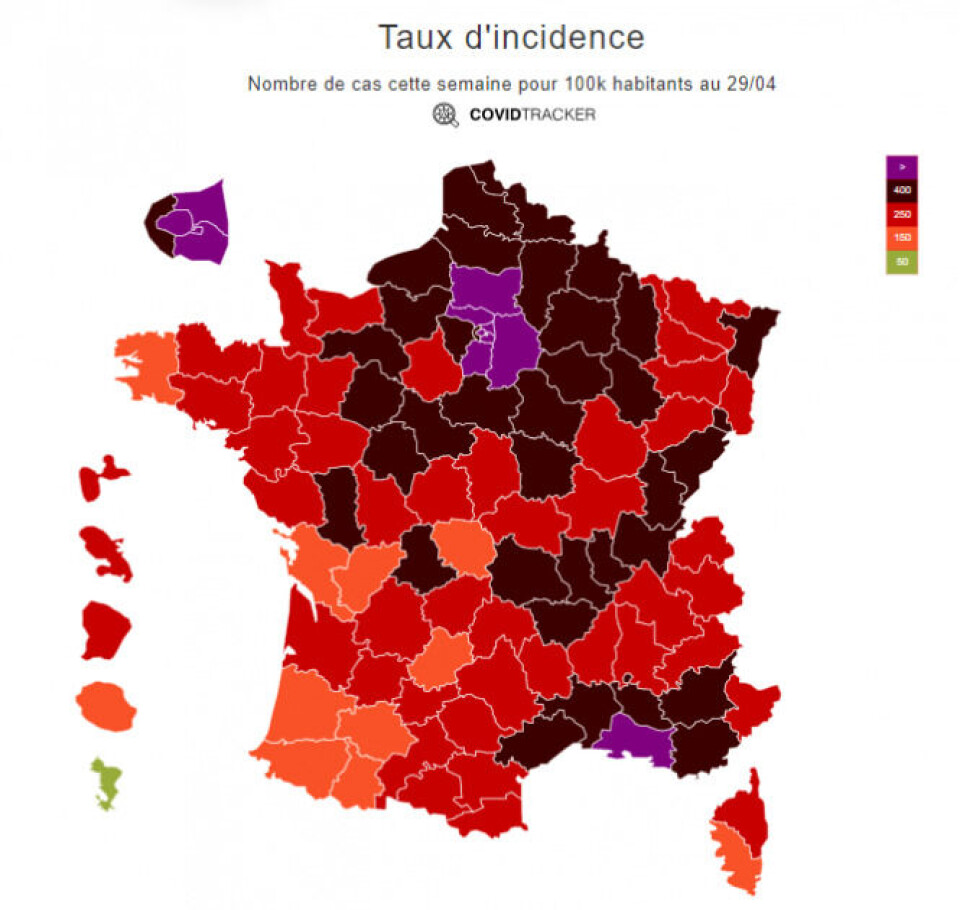-
25 Grand Frais stores to open in France as American investors prepare to purchase chain
Expansion would mean 3,000 new jobs
-
How to lower the amount you pay for insurance in France
‘Big three’ insurances all set to see costs rise in 2026
-
France’s end-of-year tips: how much to give firefighters, cleaners, and waste collectors
Informal tips known as ‘étrennes’ are widespread practice
France's lockdown exit plans: Which departments risk remaining closed?
France is to ease Covid-19 restrictions in four stages starting on May 3 but the president has warned that ‘emergency brakes’ will be maintained in areas where the epidemic is not under control

France’s Covid-19 restrictions will gradually be eased on a national level over the next two months, but measures may be maintained locally in some departments if the epidemic situation requires it.
President Emmanuel Macron announced plans to ease measures in France in an interview published in several regional publications yesterday (April 29).
It involves a four-date process that will result in the curfew being lifted completely on June 30. See the four-step plan here.
The president said he hoped to apply the plan nationally but warned that some departments may be blocked from progressing through the stages of the plan if their Covid-19 situation was still concerning.
All departments will progress to the first stage, set to come into effect on May 3, which will mean the end of restrictions - and associated attestation forms - related to daytime travel beyond 10kms of your home in France.
“The measures will be national, but we will be able to put in place ‘emergency brakes’ in the areas where the virus is circulating too much.”
These brakes will be applied in cities or departments where any of the following criteria are met:
- The incidence rate (the number of people positive for Covid-19 out of 100,000 population) exceeds 400;
- The incidence rate surges quickly;
- There is a saturation of patients in intensive care units;
The president said in the interview there were 10 departments where the incidence rate was currently over 400 but as of April 29 there are eight reported.
Most are in and around the Paris area.
They are, with the incidence rate in brackets:
- Seine-Sant-Denis (508)
- Val d’Oise (490)
- Val-de-Marne (490)
- Essonne (437)
- Seine-et-Marne (432)
- Oise (423)
- Paris (420)
- Bouches-du-Rhône (451)
If the Covid-19 situation in a city or department leads to one of these three criteria being met, then the government, in consultation with the prefects and local authorities, will block re-openings, Mr Macron stated.
The map below shows the incidence rate of Covid-19 per department in France. The department coloured purple are the ones with a rate higher than 400.

























